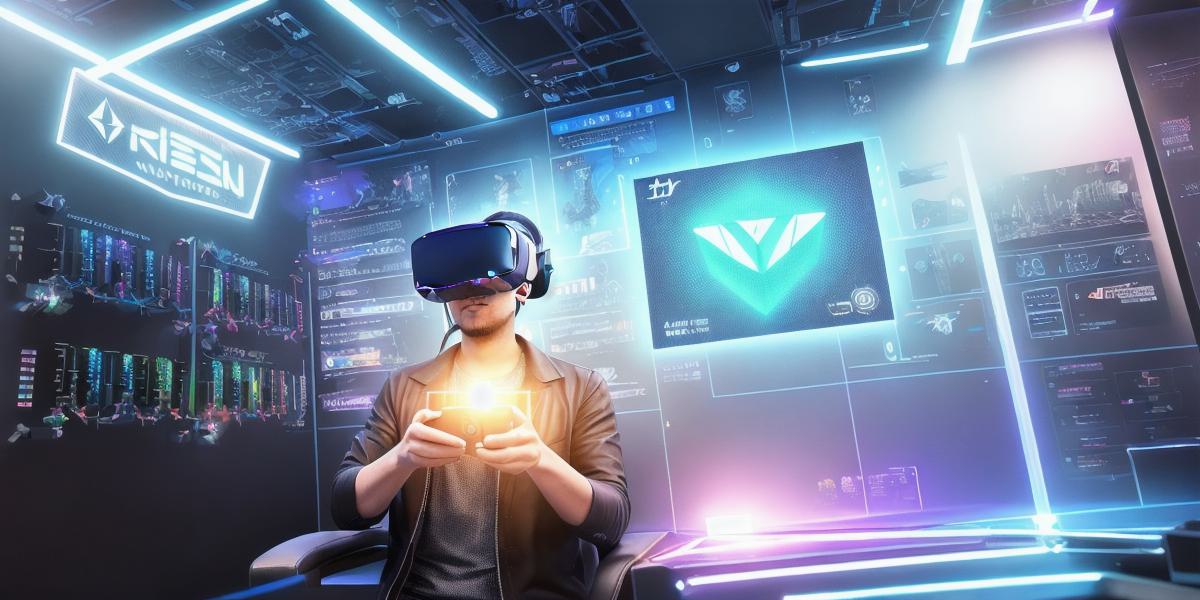As a developer, you’re probably aware of the growing popularity of non-fungible tokens (NFTs) in the gaming industry. NFTs are unique digital assets that can represent anything from art to collectibles to in-game items. In this guide, we will walk you through the steps necessary to get started with NFT game development.
1. Choose Your Game Development Platform
Before you start developing your NFT game, you’ll need to choose a platform to work on. There are several options available, including Unity, Unreal Engine, and Godot. Each of these platforms has its own strengths and weaknesses, so it’s important to research them carefully before making a decision.
For example, Unity is a popular choice for game development due to its ease of use and wide range of tools and assets. It also supports NFT integration through plugins like OpenSea and Rarible.
2. Create Your NFT Assets
Once you’ve chosen your platform, the next step is to create your NFT assets. These can include anything from characters to items to environments. You’ll need to design these assets with NFT technology in mind, which means creating them as unique digital files that can be stored on a blockchain.
There are several tools available for creating NFT assets, including OpenSea and Rarible. These platforms allow you to mint your own NFTs and sell them on the open market.
3. Integrate NFT Technology
Once you have your NFT assets created, it’s time to integrate NFT technology into your game. This will involve setting up a smart contract on a blockchain like Ethereum or Binance Smart Chain. The smart contract will govern the ownership and transfer of your NFTs.
There are several tools available for creating smart contracts, including Remix and Truffle. These platforms allow you to write and test your code before deploying it on the blockchain.
4. Test Your Game and Launch
Once you’ve integrated NFT technology into your game, it’s time to test everything thoroughly. This will involve playtesting your game to ensure that the NFTs are functioning correctly and that players can buy, sell, and trade them as intended.
When you’re ready to launch your game, you’ll need to set up a marketplace where players can buy and sell your NFTs. Platforms like OpenSea and Rarible are popular choices for this purpose.
Case Study: CryptoKitties
CryptoKitties is a popular NFT game that was launched in 2017 on the Ethereum blockchain. The game allows players to collect, breed, and sell digital cats as NFTs.
CryptoKitties was a huge success, with millions of players worldwide participating in the game. It raised over $30 million in revenue during its first year and paved the way for other NFT games to follow.
The key to CryptoKitties’ success was its simple yet addictive gameplay, combined with the unique ownership and transferability of NFTs. Players could buy, sell, and trade their cats as they pleased, creating a thriving market for these digital assets.
FAQs
What are NFTs?
NFTs are non-fungible tokens that represent unique digital assets on a blockchain. They can be anything from art to collectibles to in-game items.
How do I create an NFT game?
To create an NFT game, you’ll need to choose a game development platform, create your NFT assets, integrate NFT technology, and test and launch your game.
What are smart contracts?
Smart contracts are self-executing contracts with the terms of the agreement between buyer and seller being directly written into lines of code. They govern the ownership and transfer of NFTs on a blockchain.



